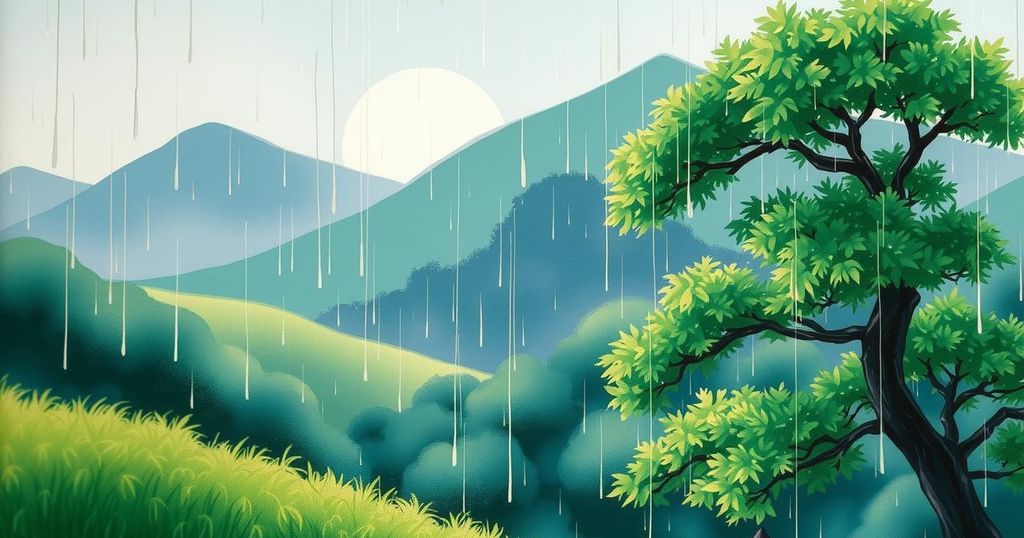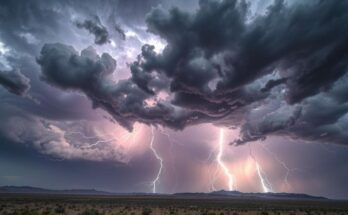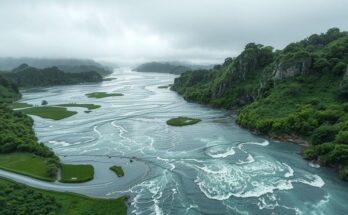Rainfall has significantly halted the spread of a severe wildfire in Japan, which has caused one fatality and forced over 4,500 evacuations. The blaze, spanning approximately 2,900 hectares, is the largest in Japan in over fifty years. While residents are relieved, officials continue to monitor the situation, emphasizing the connection between climate change and wildfire occurrences.
Officials have announced that rainfall has effectively curtailed the spread of Japan’s worst wildfire in over fifty years. This disaster, which has affected the area around Ofunato for more than a week, has tragically resulted in one fatality and forced more than 4,500 individuals to evacuate their homes. According to local fire officials, the recent precipitation, which followed a significant dry spell, has aided firefighting operations.
Mayor Kiyoshi Fuchigami of Ofunato reported at a recent briefing that the situation has calmed to some degree, stating, “Thanks in part to the rain, the situation has subsided to an extent.” He acknowledged the residents’ eagerness to return home but noted that evacuation orders would remain in effect until safety could be assured. Despite the improvements, some white smoke and active fire sources were still reported.
Residents expressed relief at the noticeable reduction of smoke in the area. An elderly woman shared her joy with public broadcaster NHK, saying, “I’m relieved to see no smoke,” while another resident expressed happiness regarding the recent rain, stating he was “very happy that we had rain yesterday.”
The wildfire has devastated approximately 2,900 hectares (7,170 acres), making it the largest wildfire in Japan in over fifty years. This damage surpasses the 2,700 hectares affected by the infamous Hokkaido fire in 1975. Last year, Japan experienced an unprecedented hot summer, driven by climate change impacts, further exacerbating conditions for wildfires.
Ofunato has faced extreme weather, recording just 2.5 millimeters (0.1 inches) of rainfall in February, which broke a historical low and was drastically lower than the average monthly rainfall. Preliminary reports indicate that at least 78 structures have sustained damages, though the full extent is still under evaluation by the fire agency.
While Japan has seen a reduction in wildfires since the 1970s, approximately 1,300 incidents occurred in 2023, particularly during the dry and windy period from February to April. Greg Mullins, a former fire and rescue commissioner for New South Wales, observed that the recent fires in Japan and Los Angeles were atypical for winter months, attributing this trend to climate change. He explained, “This is a common by-product of climate change,” highlighting the relationship between hot summers, increased evaporation, and subsequent dry landscapes.
In conclusion, Japan’s worst wildfire in over fifty years appears to be under control due to recent rains, offering relief to affected residents. Mayor Kiyoshi Fuchigami emphasized the need for safety before allowing evacuations, as efforts continue to assess the damages. This incident underscores the significant impact of climate change on wildfire frequency and intensity. Addressing these environmental challenges remains crucial for future disaster prevention efforts.
Original Source: www.bryantimes.com




